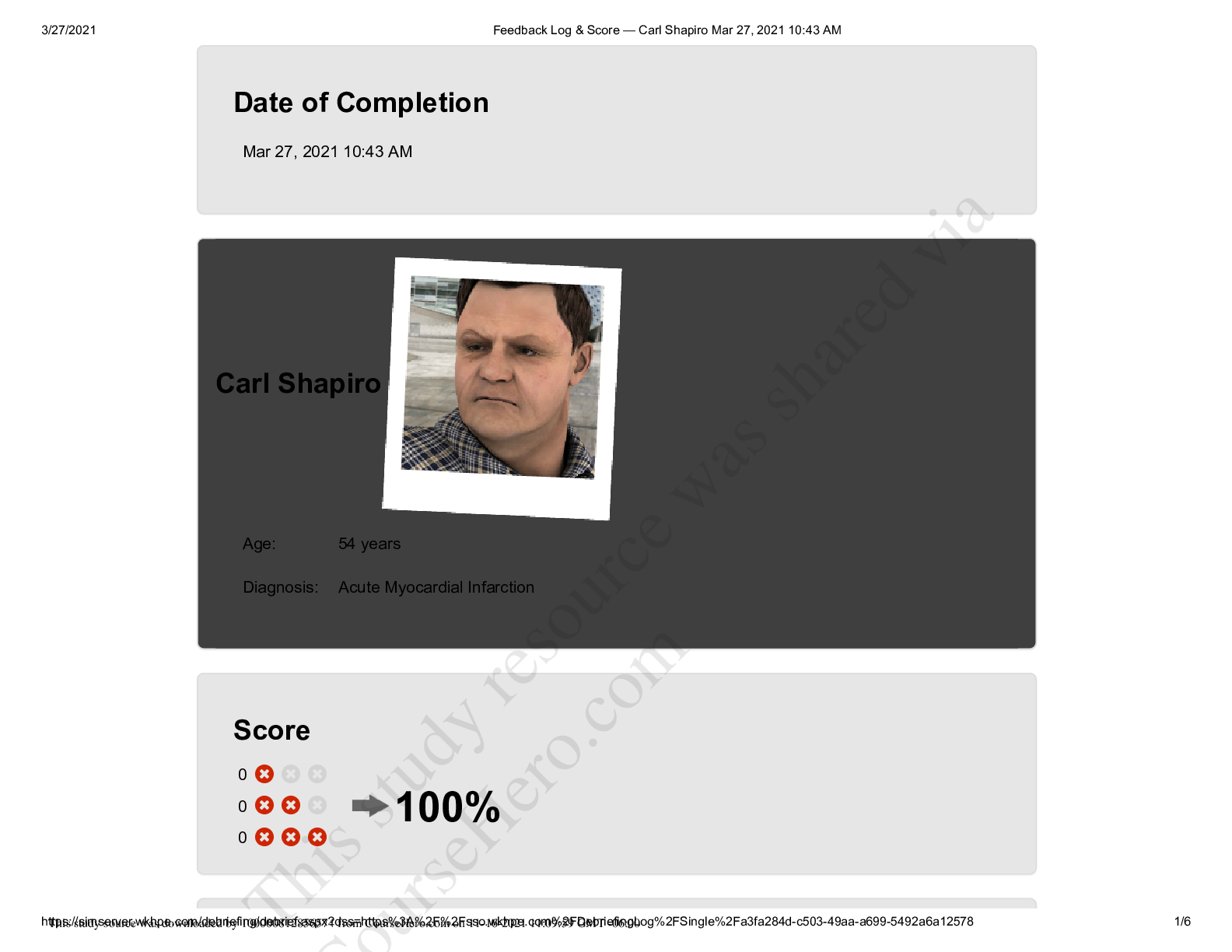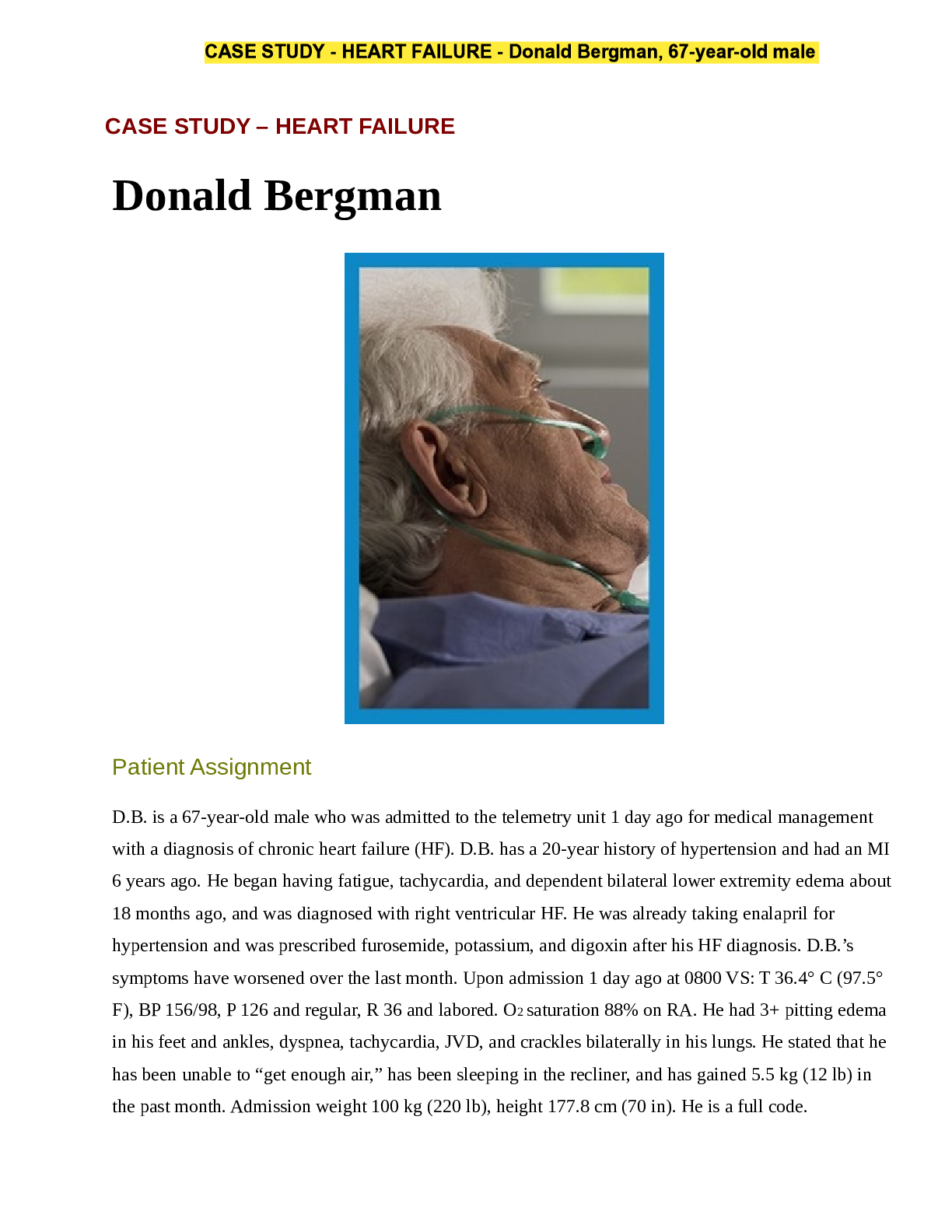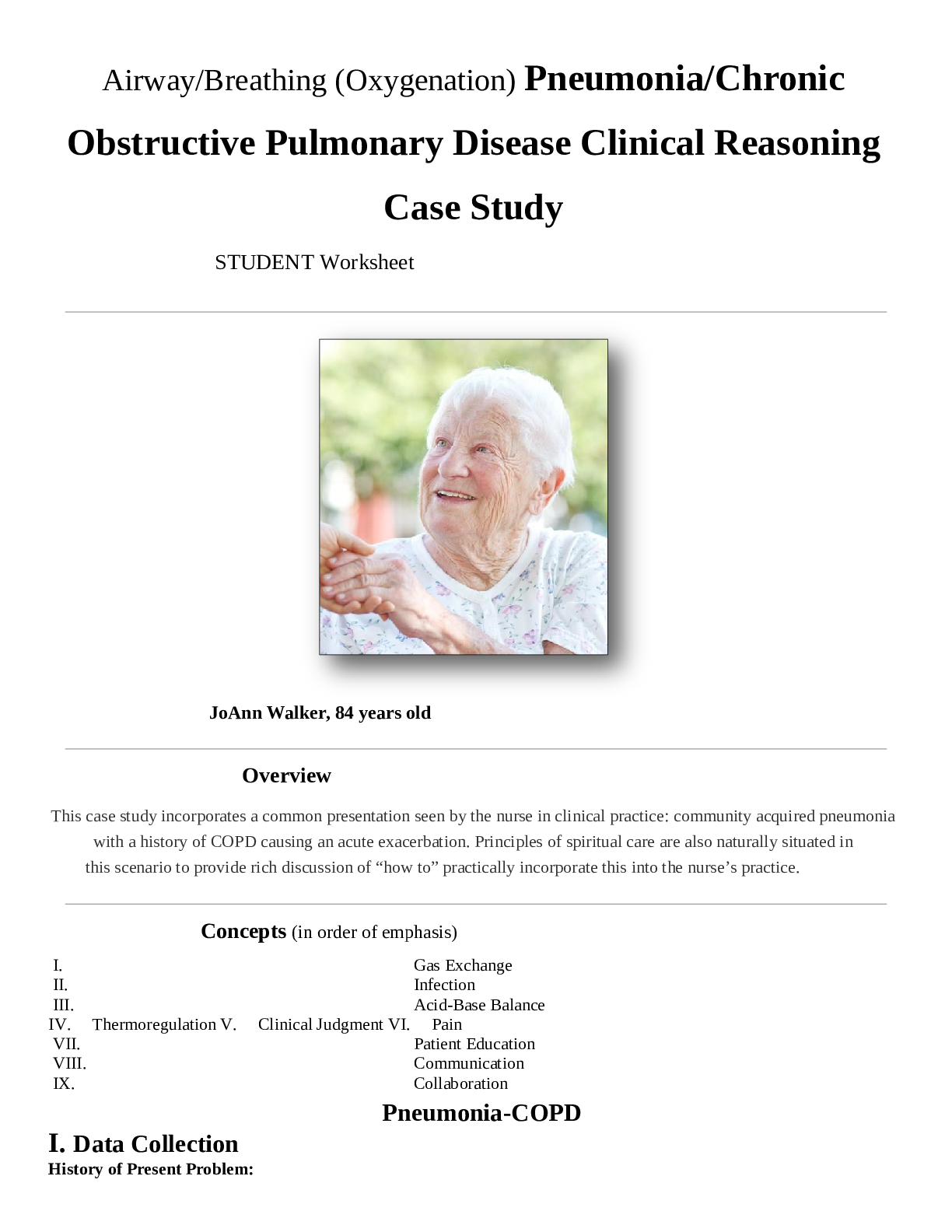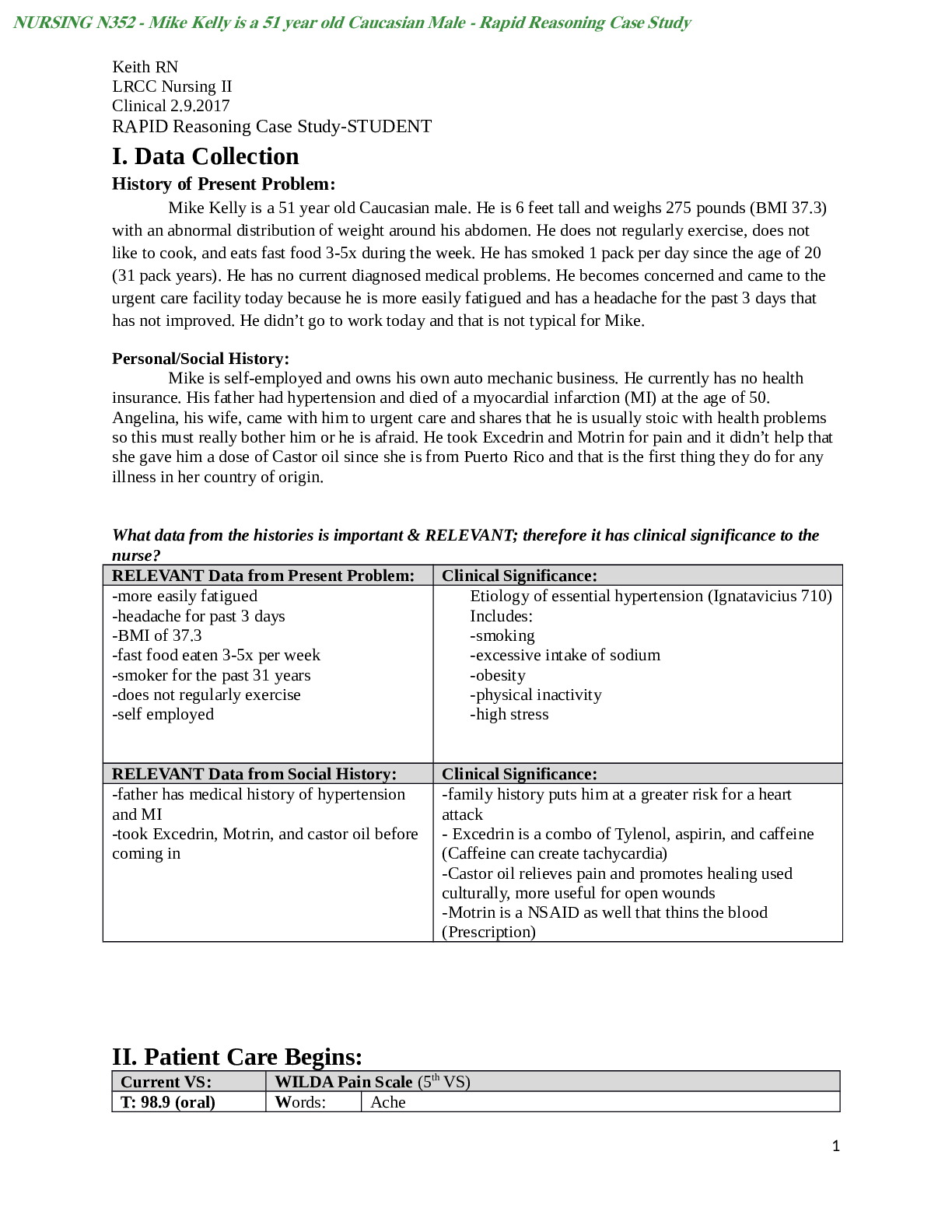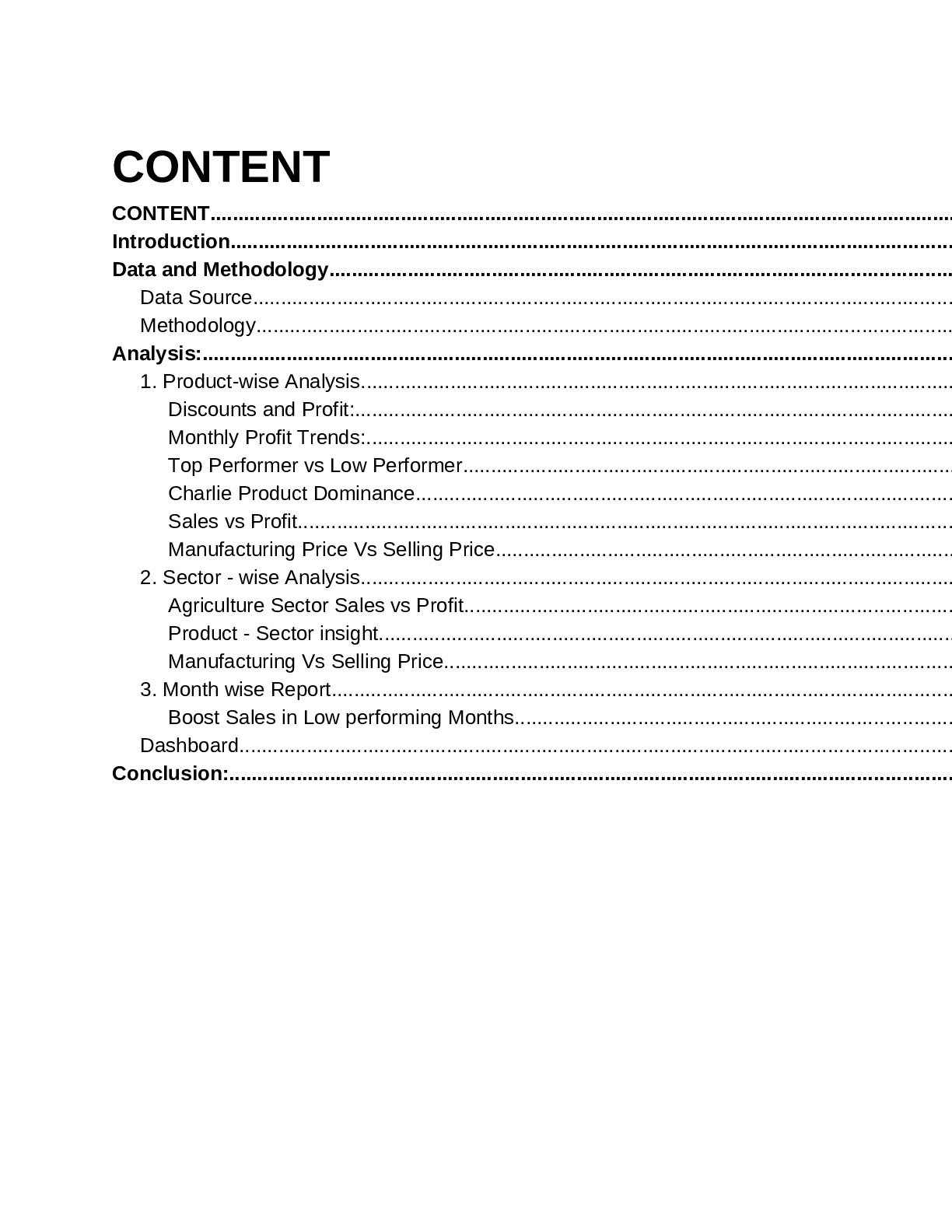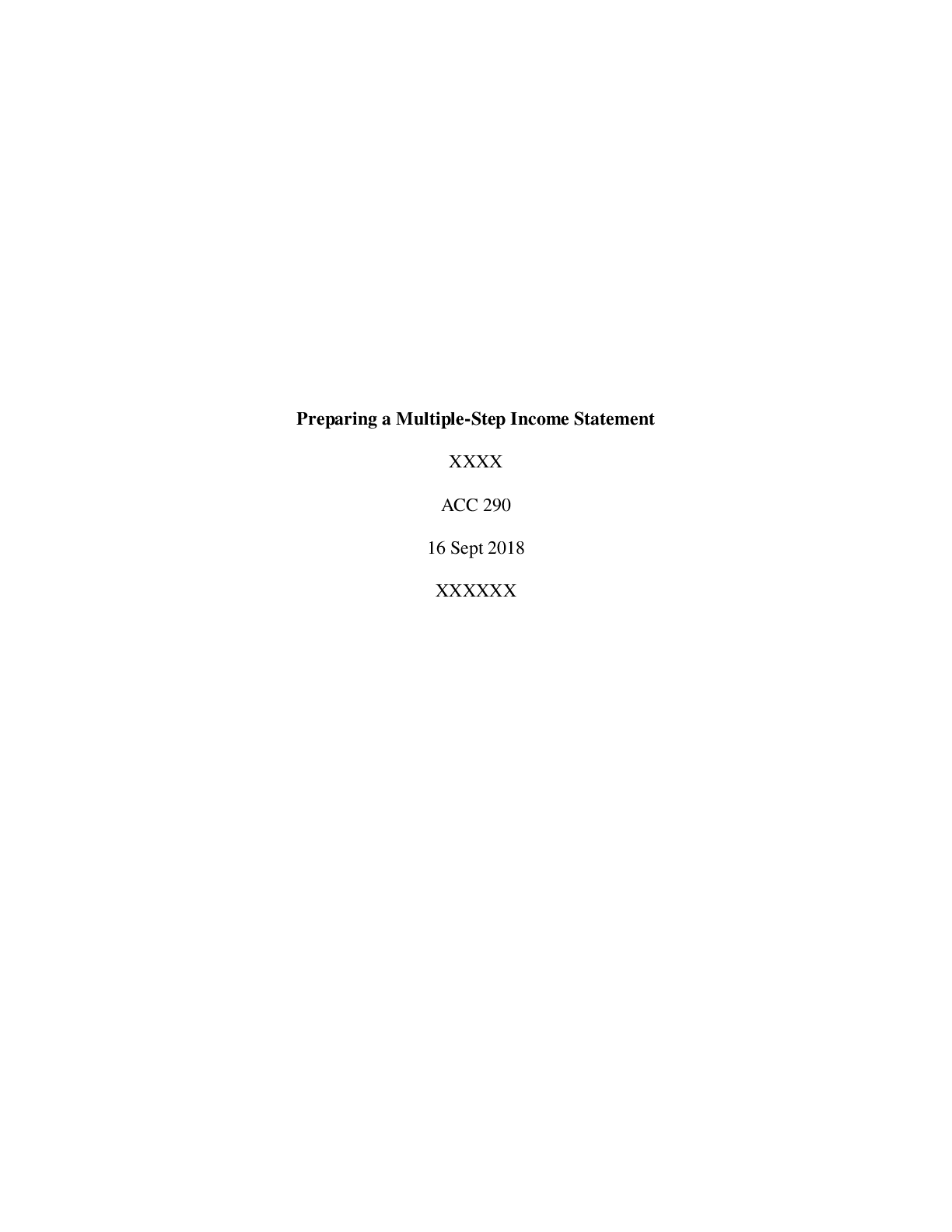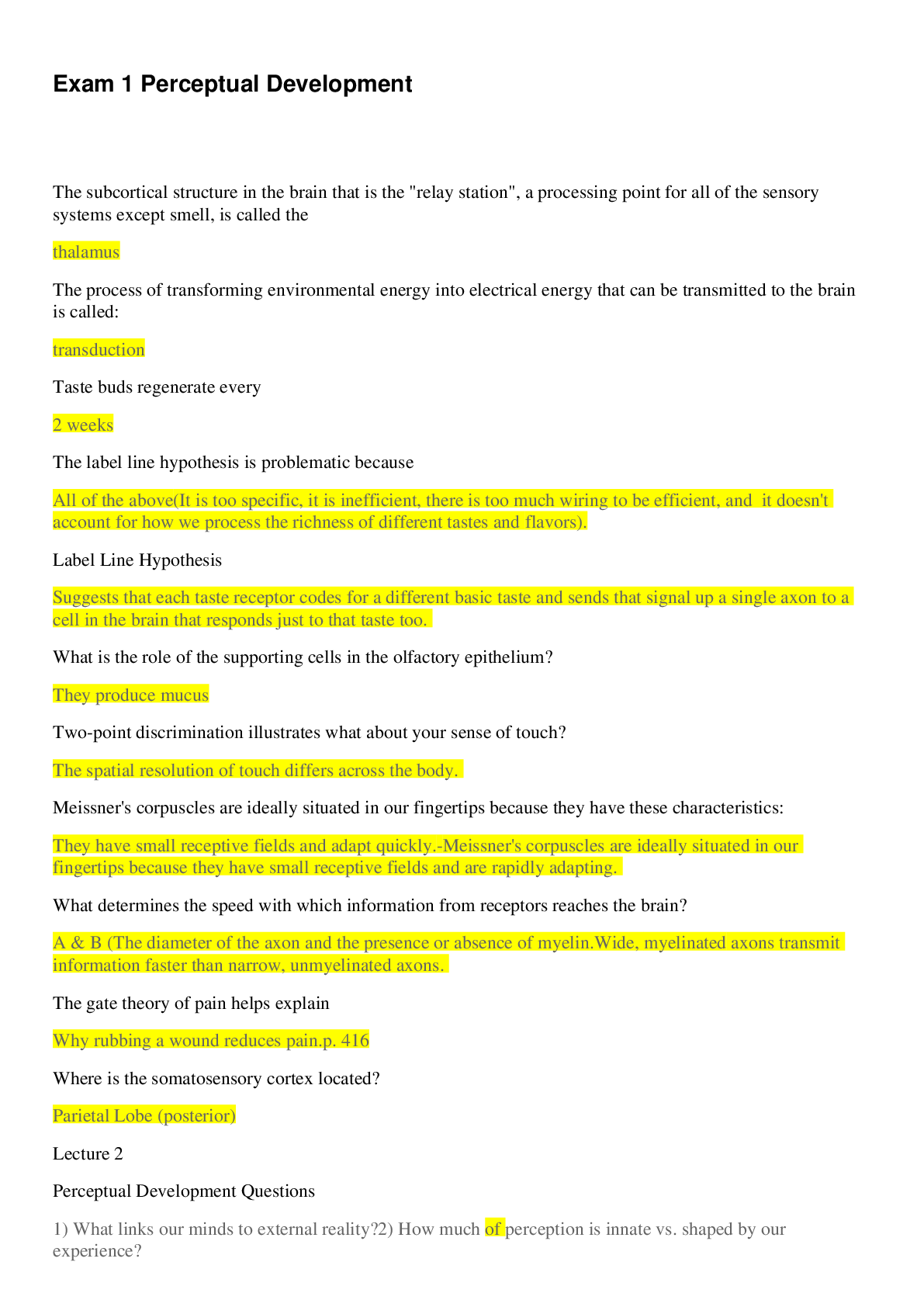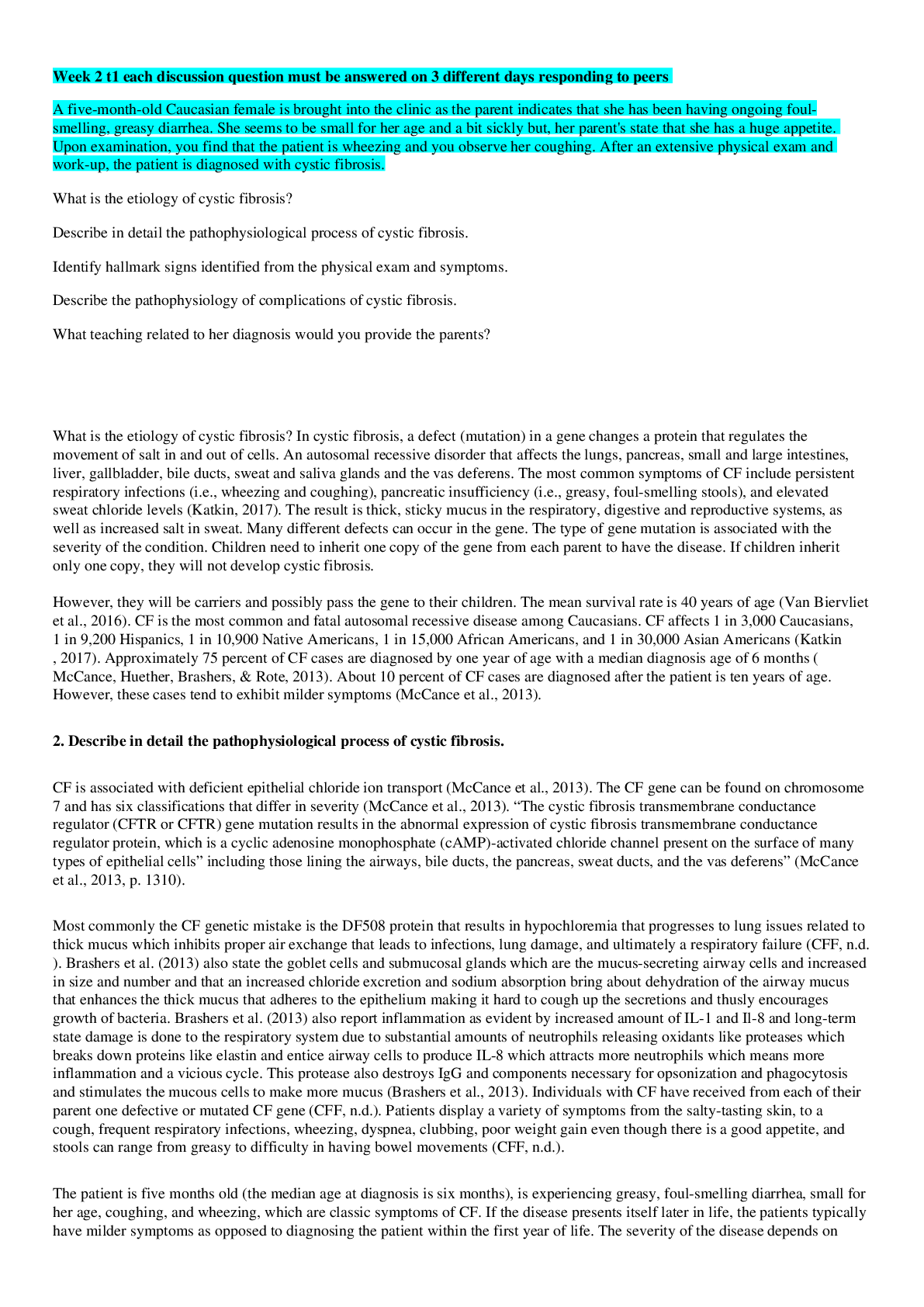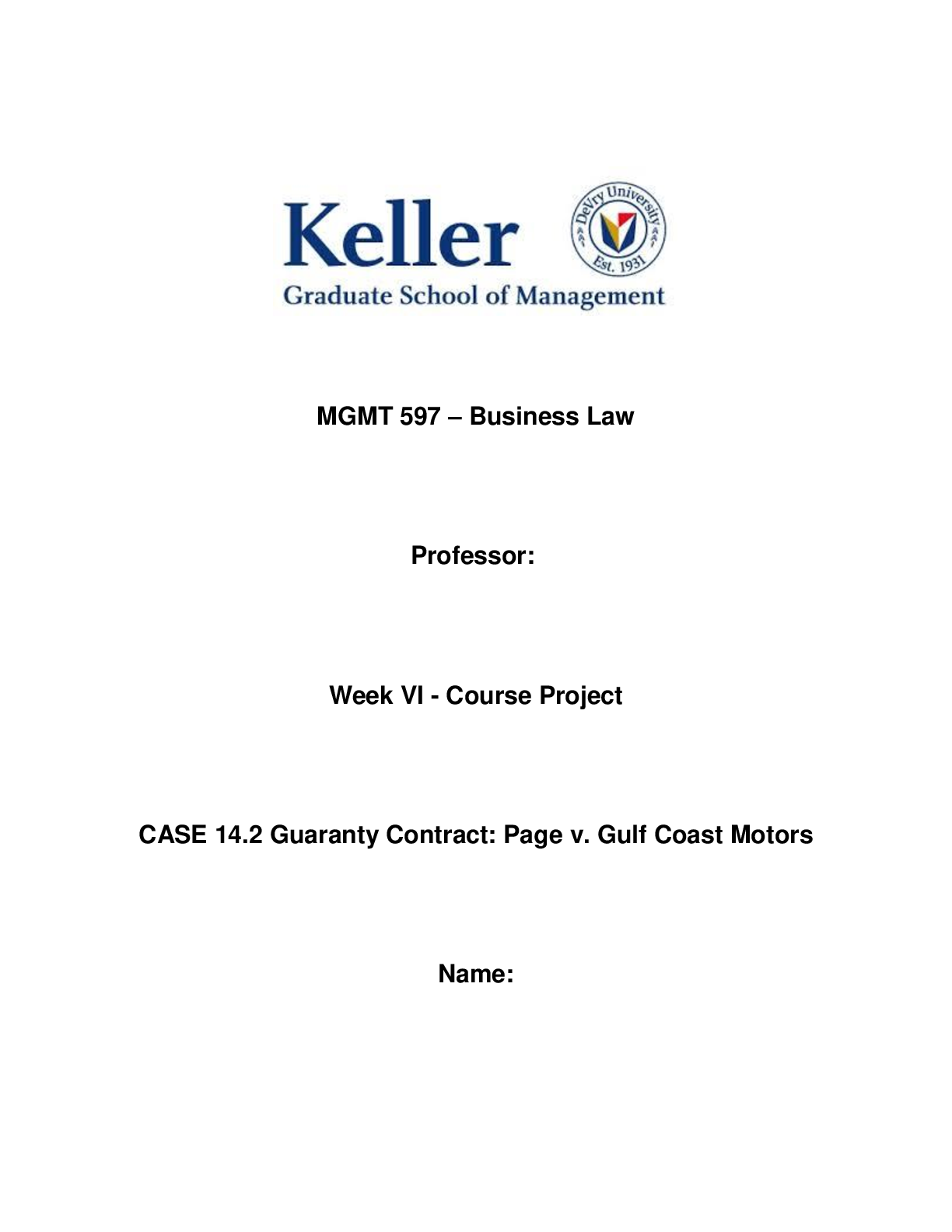*NURSING > CASE STUDY > MISC ANSWER_KEY-Sepsis-SKINNY Reasoning (All)
MISC ANSWER_KEY-Sepsis-SKINNY Reasoning
Document Content and Description Below
Painful, burning sensation when she urinates as well as frequency of urination the last week Did not know what day it was. She is mentally alert with no history of confusion While taking her bath... today, she was weak and unable to get out of the tub and used the help button to call for medical assistance. These symptoms are classic with a urinary tract infection (UTI). Suspecting a urinary infection, the nurse needs to know that if a patient meets the SIRs criteria, they should suspect sepsis. With an infection of any kind, sepsis is identified by having 2 or more of the following criteria of Systemic Inflammatory Response Syndrome (SIRS): • Temp >100.4 or <96.8 • HR >90 • RR >20 • WBC >12,000 or <4000 • Bands >10% New onset of confusion is always a clinical RED FLAG in the elderly, and when CLUSTERED with other symptoms is not representing a neurologic problem, but is commonly seen with an infection such as a UTI. This confirms the weakness and fatigue she has had the past 3 days. It is severe weakness and a clinical RED FLAG if she is unable to get out of the bath tub and needed to call for assistance. RELEVANT Data from Social History: Clinical Significance: Jean lives independently in a senior apartment retirement community. She is widowed and has two daughters who are active and involved in her life. Is functioning at a high level for an 82-year-old woman and is independent at this time. It is important for the nurse to re-evaluate the functional status anytime there is a hospital admission to ensure safety. If there is ever a question, consult social services. Supportive family is a positive influence that will increase her ability to maintain current autonomy. Patient Care Begins: Current VS: P-Q-R-S-T Pain Assessment (5th VS): T: 101.8 F/38.8 C (oral) Provoking/Palliative: Nothing/Nothing P: 110 (regular) Quality: Ache R: 24 (regular) Region/Radiation: Right flank BP: 102/50 Severity: 5/10 O2 sat: 98% room air Timing: Continuous The nurse recognizes the need to validate his/her concern of fluid volume deficit and performs a set of orthostatic VS and obtains the following: Position: HR: BP: Supine 110 102/50 Standing 132 92/42 What VS data are RELEVANT and must be recognized as clinically significant by the nurse? RELEVANT VS Data: Clinical Significance: T: 101.8 F/38.8 C (oral) P: 110 reg. R: 24 BP : 102/50 MAP : 67 Right flank pain, continuous, 5/10 Ortho BPs: Supine: HR-110/BP-102/50 Standing: HR- 132/BP-92/42 With an infection of any kind, sepsis is identified by having 2 or more of the following criteria of Systemic Inflammatory Response Syndrome (SIRS): • Temp >100.4 or <96.8 • HR >90 • RR >20 • WBC >12,000 or <4000 • Bands >10% All three of these VS components meet systemic inflammatory response syndrome (SIRS) criteria. Therefore, the nurse must recognize that Jean is likely septic, and is at risk for progression to septic shock. This must be recognized by the nurse and is another clinical RED FLAG. Though this BP is technically within normal range, the nurse must recognize that it is in the LOW range of normal. When combined with what we know in this scenario regarding Jean’s fluid volume deficit and risk of sepsis, this warrants close observation and must be TRENDED closely. Jean also has a history of hypertension so this is probably “hypotension” for her. MAP is more important than the SBP and DBP because it gives the nurse a better clue as to organ perfusion. MAP >/=70 is goal. In this scenario with known dysuria, the presence of flank pain is clinically significant and must be recognized by the nurse. This is most likely due to pyelonephritis or the progression of the urinary infection in the lower tract, migrating to the kidneys. This makes her infection more serious and represents clinical progression of the infection in the urinary tract. Review abnormal orthostatic BP findings. An increase of 20 beats or more from lying baseline is by itself a POSITIVE finding and is usually seen in mild to moderate dehydration from my clinical experience. If a decrease in 20 points or more of mm/Hg in SBP is seen from lying to standing in addition to the increase in HR, this reflects moderate to severe fluid volume deficit/dehydration. Because she has both a drop of BP and increase in HR as well as being symptomatic, this confirms that you are seeing moderate to severe fluid volume depletion. Anticipate IV fluid resuscitation. *Remember that there are many physical exam findings that can be used to assess fluid volume status (i.e. dehydration). Other key assessment findings include: decreased urine output, dry mucus membranes, decreased skin turgor. Current Assessment: GENERAL APPEARANCE: Resting comfortably, appears in no acute distress RESP: Breath sounds clear with equal aeration bilaterally, nonlabored respiratory effort [Show More]
Last updated: 2 years ago
Preview 1 out of 15 pages

Buy this document to get the full access instantly
Instant Download Access after purchase
Buy NowInstant download
We Accept:

Reviews( 0 )
$7.00
Can't find what you want? Try our AI powered Search
Document information
Connected school, study & course
About the document
Uploaded On
Jun 04, 2021
Number of pages
15
Written in
Additional information
This document has been written for:
Uploaded
Jun 04, 2021
Downloads
0
Views
87




